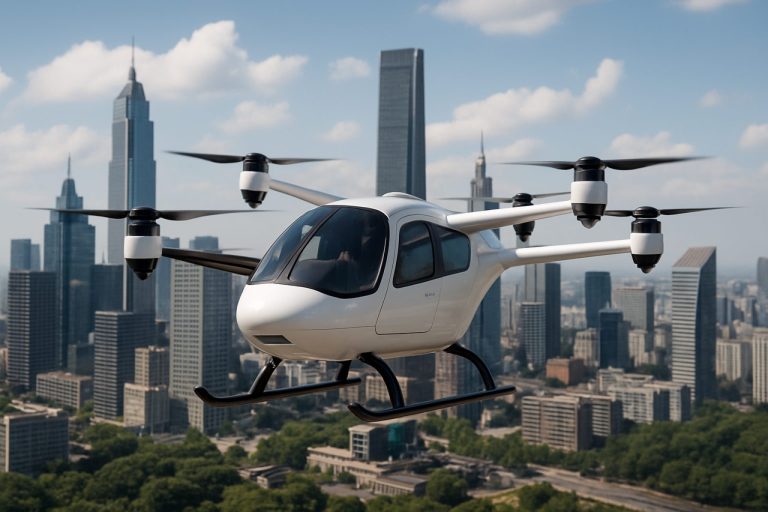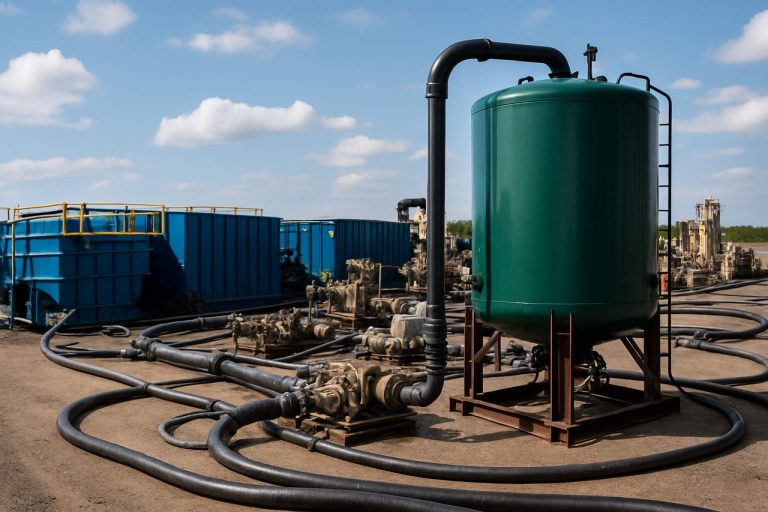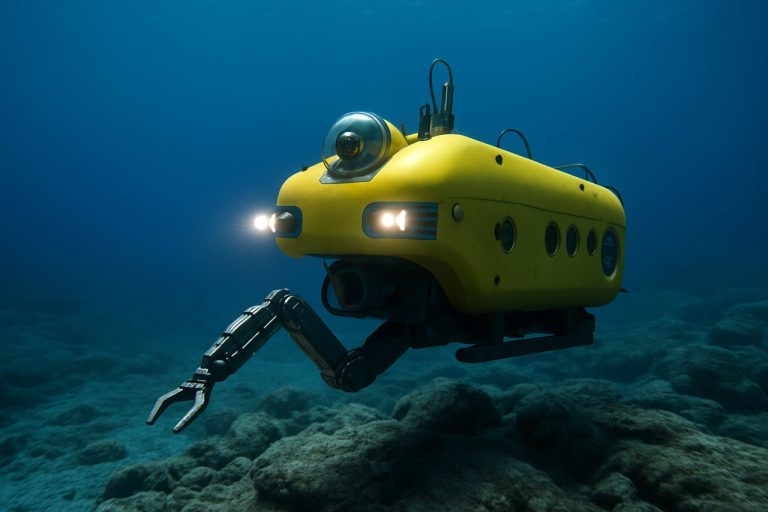
Subsea Autonomous Robotics Industry Report 2025: Market Growth, Technology Innovations, and Strategic Insights for the Next 5 Years
- Executive Summary & Market Overview
- Key Technology Trends in Subsea Autonomous Robotics
- Competitive Landscape and Leading Players
- Market Growth Forecasts (2025–2030): CAGR, Revenue, and Volume Analysis
- Regional Market Analysis: North America, Europe, APAC, and Rest of World
- Future Outlook: Emerging Applications and Investment Hotspots
- Challenges, Risks, and Strategic Opportunities
- Sources & References
Executive Summary & Market Overview
Subsea autonomous robotics refers to the deployment of unmanned, self-guided robotic systems for underwater applications, including inspection, maintenance, data collection, and intervention tasks across industries such as oil & gas, defense, marine research, and offshore renewables. These systems, which include Autonomous Underwater Vehicles (AUVs) and Remotely Operated Vehicles (ROVs) with advanced autonomy, are transforming subsea operations by reducing human risk, lowering operational costs, and enabling access to previously unreachable environments.
The global market for subsea autonomous robotics is poised for robust growth in 2025, driven by increasing offshore exploration activities, heightened demand for real-time ocean data, and the ongoing digital transformation of marine industries. According to MarketsandMarkets, the AUV market alone is projected to reach USD 2.7 billion by 2025, with a compound annual growth rate (CAGR) exceeding 20%. This expansion is underpinned by technological advancements in artificial intelligence, battery life, sensor integration, and underwater communication, which are enhancing the capabilities and reliability of autonomous systems.
Key industry players such as Saab, Kongsberg Maritime, and Ocean Infinity are investing heavily in R&D to develop next-generation subsea robots capable of longer missions, deeper dives, and more complex tasks. The oil & gas sector remains the largest end-user, leveraging autonomous robotics for pipeline inspection, leak detection, and infrastructure maintenance, while the defense sector is increasingly adopting these systems for mine countermeasures and surveillance.
Geographically, North America and Europe dominate the market due to established offshore industries and strong government support for marine technology innovation. However, the Asia-Pacific region is expected to witness the fastest growth, fueled by expanding offshore wind projects and increased maritime security initiatives, particularly in China, Japan, and South Korea (Fortune Business Insights).
In summary, 2025 will see subsea autonomous robotics at the forefront of a new era in underwater operations, characterized by rapid technological progress, expanding application scope, and growing investment from both public and private sectors. The market’s trajectory is set to accelerate as autonomy, data analytics, and energy efficiency continue to advance, unlocking new opportunities across the blue economy.
Key Technology Trends in Subsea Autonomous Robotics
Subsea autonomous robotics is undergoing rapid technological evolution, driven by the increasing demand for efficient, safe, and cost-effective underwater operations across industries such as offshore energy, marine research, and defense. In 2025, several key technology trends are shaping the landscape of subsea autonomous robotics, enhancing their capabilities and expanding their applications.
- Advanced Autonomy and AI Integration: The integration of artificial intelligence (AI) and machine learning algorithms is enabling subsea robots to perform complex tasks with minimal human intervention. These advancements allow for real-time decision-making, adaptive mission planning, and improved object recognition in challenging underwater environments. Companies like Saab and Oceaneering International are at the forefront, deploying AI-powered autonomous underwater vehicles (AUVs) for inspection, maintenance, and data collection.
- Enhanced Sensing and Perception: The adoption of high-resolution sonar, optical sensors, and advanced sensor fusion techniques is significantly improving the perception capabilities of subsea robots. These technologies enable more accurate mapping, obstacle avoidance, and target identification, even in low-visibility conditions. According to Wood Mackenzie, sensor innovation is a critical enabler for expanding the operational envelope of AUVs and remotely operated vehicles (ROVs).
- Energy Efficiency and Power Management: Battery technology advancements, such as lithium-sulfur and solid-state batteries, are extending mission durations and operational ranges for subsea robots. Energy harvesting from ocean currents and wireless charging stations are also being explored to support long-term autonomous deployments, as highlighted by DNV.
- Swarm Robotics and Collaborative Operations: The development of swarm robotics is enabling multiple AUVs to work collaboratively, sharing data and coordinating tasks for large-scale surveys and inspections. This approach increases efficiency and redundancy, reducing operational costs and risks. Research initiatives by organizations such as National Oceanography Centre are demonstrating the potential of swarm-based subsea missions.
- Edge Computing and Real-Time Data Processing: Embedding edge computing capabilities within subsea robots allows for on-board data analysis, reducing the need for high-bandwidth communication links and enabling faster response times. This is particularly valuable for time-sensitive applications like leak detection and environmental monitoring, as noted by Frost & Sullivan.
These technology trends are collectively driving the next generation of subsea autonomous robotics, making them more intelligent, resilient, and versatile for a wide range of underwater missions in 2025 and beyond.
Competitive Landscape and Leading Players
The competitive landscape of the subsea autonomous robotics market in 2025 is characterized by rapid technological innovation, strategic partnerships, and a growing emphasis on integrated solutions. The sector is dominated by a mix of established marine technology firms and agile startups, each vying to address the increasing demand for efficient, cost-effective, and reliable subsea operations across industries such as oil & gas, defense, marine research, and offshore renewables.
Leading players in this market include Saab AB, renowned for its Sabertooth hybrid AUV/ROV platform, and Oceaneering International, Inc., which offers a suite of autonomous underwater vehicles (AUVs) tailored for deepwater inspection and intervention. Fugro has also emerged as a key player, leveraging its global footprint and expertise in remote and autonomous marine operations to deliver data-driven subsea solutions.
Startups and niche innovators are making significant inroads, particularly in the development of AI-driven navigation, swarm robotics, and modular vehicle architectures. Companies such as Hydromea and SeeByte are pushing the boundaries of autonomy and interoperability, enabling more complex missions and multi-vehicle coordination. These advancements are attracting investment and partnership opportunities from larger industry incumbents seeking to enhance their technology portfolios.
Strategic collaborations are a hallmark of the current competitive environment. For example, Kongsberg Maritime has partnered with research institutions and energy majors to accelerate the deployment of autonomous robotics for subsea inspection, maintenance, and repair (IMR) tasks. Similarly, Teledyne Marine continues to expand its product suite through acquisitions and technology integration, reinforcing its position as a comprehensive provider of subsea robotics solutions.
Market competition is further intensified by the entry of defense contractors and technology conglomerates, who are leveraging their R&D capabilities to develop next-generation autonomous systems for both commercial and military applications. The result is a dynamic and fragmented market, where leadership is defined by innovation speed, system reliability, and the ability to deliver end-to-end solutions that reduce operational costs and enhance safety in challenging subsea environments.
Market Growth Forecasts (2025–2030): CAGR, Revenue, and Volume Analysis
The subsea autonomous robotics market is poised for robust growth between 2025 and 2030, driven by increasing offshore energy exploration, advancements in artificial intelligence, and the rising need for cost-effective subsea inspection and maintenance solutions. According to projections by MarketsandMarkets, the global subsea autonomous robotics market is expected to register a compound annual growth rate (CAGR) of approximately 13.2% during this period. This growth trajectory is underpinned by expanding applications in oil & gas, renewable energy, defense, and marine research sectors.
Revenue forecasts indicate that the market, valued at around USD 2.1 billion in 2025, could reach USD 4.4 billion by 2030. This surge is attributed to the increasing deployment of autonomous underwater vehicles (AUVs) and remotely operated vehicles (ROVs) for deepwater operations, pipeline inspections, and environmental monitoring. The adoption of advanced sensor technologies and machine learning algorithms is further enhancing the operational efficiency and reliability of these robotic systems, making them indispensable for subsea operations.
In terms of volume, the annual deployment of subsea autonomous robotic units is projected to grow from approximately 1,800 units in 2025 to over 3,700 units by 2030, as reported by Fortune Business Insights. The oil & gas sector remains the largest end-user, accounting for nearly 45% of total deployments, followed by offshore wind and defense applications. The Asia-Pacific region is anticipated to witness the fastest growth, fueled by increased offshore exploration activities and government investments in marine technology infrastructure.
- CAGR (2025–2030): ~13.2%
- Revenue (2025): USD 2.1 billion
- Revenue (2030): USD 4.4 billion
- Volume (2025): ~1,800 units
- Volume (2030): ~3,700 units
Key market drivers include the need for safer, more efficient subsea operations, the expansion of offshore renewable energy projects, and the integration of AI-driven navigation and data analytics. As the technology matures and costs decline, subsea autonomous robotics are expected to become even more integral to underwater operations worldwide, with leading players such as Saab and Oceaneering International investing heavily in R&D to capture emerging opportunities.
Regional Market Analysis: North America, Europe, APAC, and Rest of World
The global subsea autonomous robotics market is experiencing robust growth, with regional dynamics shaped by technological innovation, offshore energy investments, and regulatory frameworks. In 2025, North America, Europe, Asia-Pacific (APAC), and the Rest of the World (RoW) each present distinct opportunities and challenges for market participants.
North America remains a leading region, driven by significant offshore oil & gas activities in the Gulf of Mexico and strong defense sector investments. The U.S. Navy’s continued adoption of autonomous underwater vehicles (AUVs) for surveillance and mine countermeasures, alongside commercial deployments for pipeline inspection and environmental monitoring, underpin market expansion. The presence of major players such as Lockheed Martin and Oceaneering International further accelerates innovation and deployment. According to MarketsandMarkets, North America accounted for over 35% of global subsea robotics revenue in 2024, a trend expected to persist through 2025.
Europe is characterized by a strong focus on renewable energy and environmental monitoring, particularly in the North Sea and Norwegian Continental Shelf. The region benefits from supportive regulatory policies and substantial investments in offshore wind farms, driving demand for autonomous robotics in installation, inspection, and maintenance. Companies such as Saab AB and Kongsberg Maritime are at the forefront, leveraging advanced sensor integration and AI-driven navigation. The European Union’s “Blue Economy” initiatives and funding for marine technology R&D further bolster market growth, as highlighted by Frost & Sullivan.
- APAC is witnessing rapid expansion, fueled by offshore exploration in China, Australia, and Southeast Asia. The region’s growing energy demand and maritime security concerns are prompting increased adoption of subsea robotics for both commercial and defense applications. Local governments are investing in indigenous technology development, with firms like Fugro and Equinor expanding their regional presence.
- Rest of the World (RoW), including Latin America, the Middle East, and Africa, is gradually embracing subsea autonomous robotics, primarily for oil & gas exploration off Brazil and West Africa. While market penetration is lower compared to other regions, rising investments and partnerships with global technology providers are expected to drive moderate growth in 2025, as noted by Wood Mackenzie.
Overall, regional market dynamics in 2025 will be shaped by sector-specific drivers, regulatory environments, and the pace of technological adoption, with North America and Europe leading in innovation and deployment, and APAC and RoW representing high-growth frontiers.
Future Outlook: Emerging Applications and Investment Hotspots
The future outlook for subsea autonomous robotics in 2025 is marked by rapid technological advancements, expanding applications, and a surge in investment activity. As offshore industries seek to enhance operational efficiency, safety, and sustainability, autonomous underwater vehicles (AUVs) and remotely operated vehicles (ROVs) are increasingly being deployed for tasks that were once labor-intensive or hazardous. The integration of artificial intelligence, machine learning, and advanced sensor technologies is enabling these robots to perform complex missions such as deep-sea exploration, pipeline inspection, and environmental monitoring with minimal human intervention.
Emerging applications are particularly prominent in the energy sector, where subsea robotics are revolutionizing inspection, maintenance, and repair (IMR) operations for offshore oil and gas infrastructure. The growing adoption of renewable energy, especially offshore wind farms, is also driving demand for autonomous systems capable of seabed mapping, cable laying, and structural health monitoring. In addition, the defense sector is investing in subsea robotics for mine countermeasures, surveillance, and anti-submarine warfare, leveraging the stealth and endurance of autonomous platforms.
Marine research and environmental monitoring represent another significant growth area. Autonomous robots are being used to collect data on ocean health, track marine biodiversity, and monitor the impacts of climate change in remote or hazardous environments. The ability to operate continuously and transmit real-time data is transforming scientific understanding and regulatory compliance in marine ecosystems.
Investment hotspots are emerging in regions with robust offshore industries and supportive regulatory frameworks. The North Sea, Gulf of Mexico, and Asia-Pacific are leading markets, with significant funding directed toward startups and established players developing next-generation subsea robotics. According to Wood Mackenzie, global investment in subsea robotics is expected to exceed $5 billion by 2025, with a compound annual growth rate (CAGR) of over 12%. Venture capital and strategic partnerships are fueling innovation, particularly in autonomy, battery technology, and data analytics.
- Energy: Inspection and maintenance of oil, gas, and wind infrastructure
- Defense: Surveillance, mine detection, and security operations
- Research: Oceanography, climate monitoring, and biodiversity studies
- Telecommunications: Subsea cable inspection and repair
As the technology matures and costs decline, subsea autonomous robotics are poised to become indispensable across multiple sectors, with 2025 marking a pivotal year for commercialization and global adoption (MarketsandMarkets).
Challenges, Risks, and Strategic Opportunities
The subsea autonomous robotics sector faces a complex landscape of challenges and risks in 2025, but these also create avenues for strategic opportunity. One of the primary challenges is the harsh and unpredictable underwater environment, which imposes significant demands on the durability, reliability, and autonomy of robotic systems. Pressure, corrosion, biofouling, and limited visibility can impair sensor performance and mechanical integrity, leading to higher maintenance costs and operational downtime. Additionally, the need for robust communication and navigation in deepwater settings—where GPS is unavailable—remains a technical hurdle, often requiring advanced acoustic or inertial systems that are both costly and power-intensive.
Cybersecurity is an emerging risk as subsea robots become more connected and integrated with topside and cloud-based control systems. The potential for data breaches or malicious interference could compromise critical infrastructure, particularly in sectors such as offshore energy and defense. Regulatory uncertainty also persists, with evolving standards for safety, environmental impact, and data management varying across jurisdictions, complicating global deployment strategies.
Despite these challenges, strategic opportunities abound. The growing demand for offshore wind, oil and gas decommissioning, and subsea mining is driving investment in autonomous inspection, maintenance, and repair solutions. Companies that can deliver reliable, cost-effective, and low-intervention robotics stand to benefit from long-term service contracts and recurring revenue streams. The integration of artificial intelligence and machine learning is enabling more sophisticated autonomy, allowing robots to adapt to dynamic environments and perform complex tasks with minimal human oversight. This not only reduces operational risk but also addresses labor shortages and safety concerns in hazardous subsea operations.
Strategic partnerships are emerging as a key opportunity, with technology developers, energy majors, and research institutions collaborating to accelerate innovation and standardization. For example, alliances between robotics firms and offshore operators are facilitating pilot projects and early adoption, while joint ventures with sensor and battery manufacturers are driving advances in endurance and data quality. The push for sustainability and carbon reduction is also opening new markets for subsea robotics in environmental monitoring and marine conservation.
- According to Wood Mackenzie, the global market for subsea robotics is expected to grow at a CAGR of over 12% through 2025, driven by offshore renewables and digitalization initiatives.
- Technavio highlights the increasing adoption of autonomous underwater vehicles (AUVs) for pipeline inspection and seabed mapping as a major growth driver, despite ongoing technical and regulatory challenges.
- DNV notes that standardization and interoperability will be critical for scaling deployments and reducing integration risks across the industry.
Sources & References
- MarketsandMarkets
- Saab
- Kongsberg Maritime
- Ocean Infinity
- Fortune Business Insights
- Oceaneering International
- Wood Mackenzie
- DNV
- National Oceanography Centre
- Frost & Sullivan
- Fugro
- Hydromea
- SeeByte
- Teledyne Marine
- Lockheed Martin
- Equinor
- Technavio



